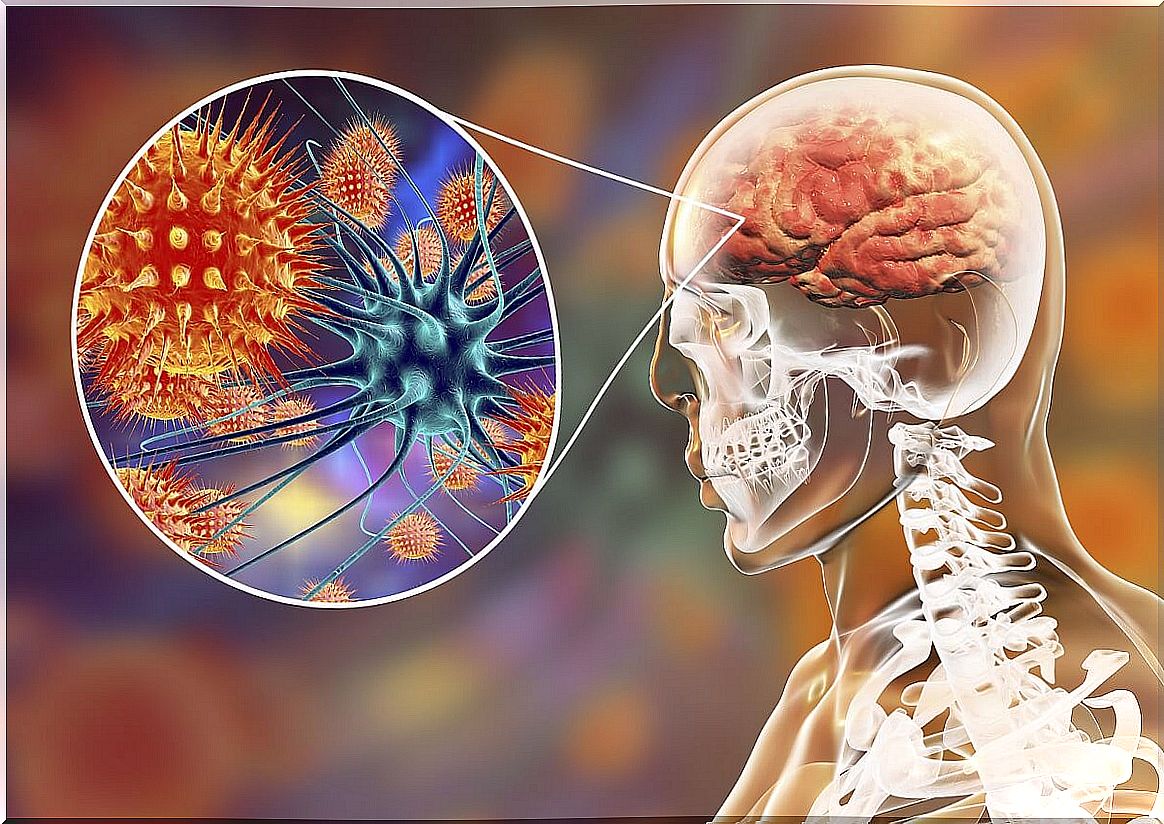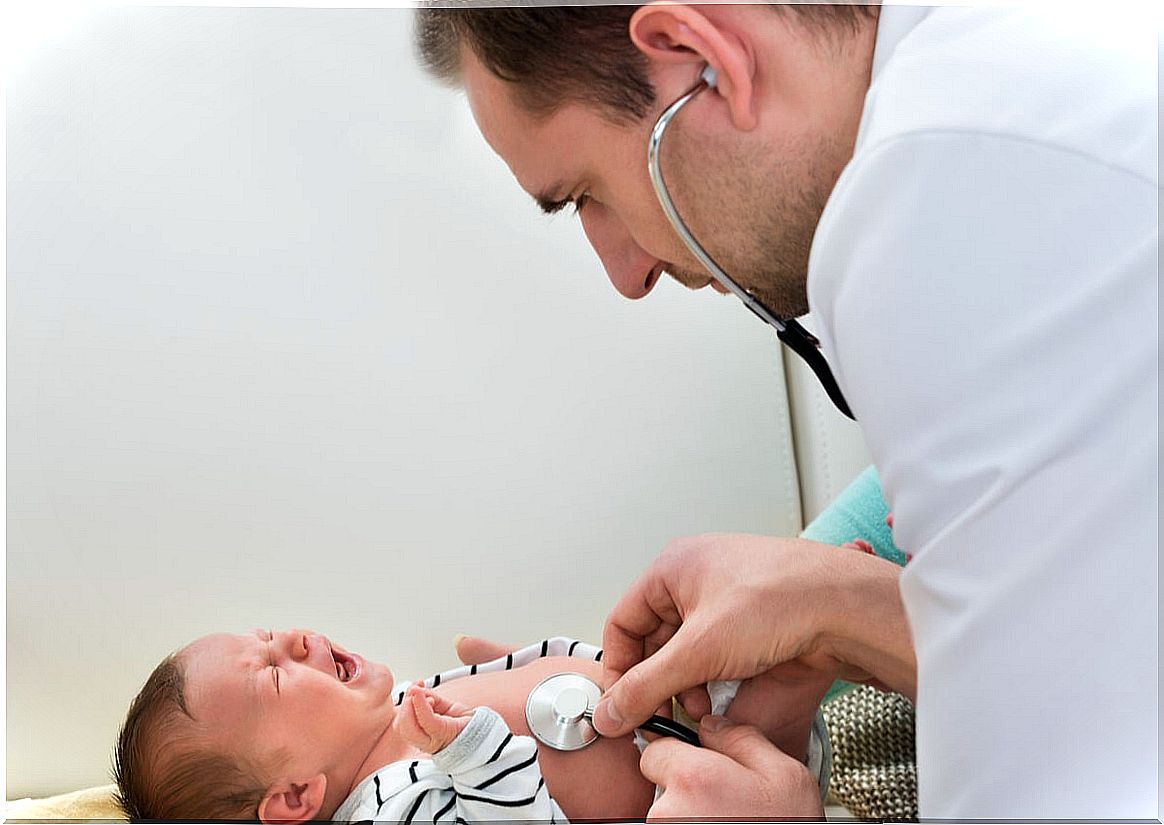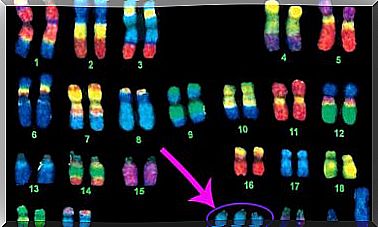World Meningitis Day: A Disease That Has A Vaccine
World Meningitis Day is set for April 24 of each year. In recent times, beyond raising awareness about the disease, the emphasis has been placed on vaccination.
Meningitis is a disease that has developed vaccines to prevent bacterial forms of it. However, the spread of immunization is not the one recommended by medical associations, among which it is proposed to increase the number of vaccinated.
What are the objectives of this celebration? What is there to know about the disease? This time we want to solve these questions. Therefore, we invite you to continue reading.
Facts about meningitis
First of all, it is important to understand that we are facing a serious pathology. Meningitis begins in the meninges of the brain, but can progress to sepsis and consequently death. The fatality rate of this disease is around 10%, which means that 10 out of 100 infected die.
The aftermath also represents seriousness. Up to 30% of children with meningitis are left with delayed maturation and seizures. Loss of senses such as vision and hearing are also among the consequences.
The meningitis vaccines are to stop Haemophilus influenzae type B , meningococci, and pneumococcus. All these bacteria are the cause of the disease in bacterial terms. Some countries include all of these immunizations on their official schedule, while others include only a few.
But information is also important on World Meningitis Day, since, according to records from the Spanish Association of Pediatrics, more than 30% of people do not know that meningitis is prevented. This misinformation represents an obstacle to the spread of immunizations.
What is meningitis?
World Meningitis Day is an opportunity to talk about this disease, which consists of inflammation of the meninges. These are layers of tissue that line the brain – separating it from the skull bones – and the spinal cord – separating it from the vertebrae -.
When the meninges become inflamed, they press on other structures, hence the symptoms. The classic triad of meningitis is made up of fever, headache, and a stiff neck. Precisely, one of the clinical tests to suspect the disease is to try to mobilize the patient’s neck.
In young children, less than 2 years old, the diagnosis is more difficult. It is sometimes suspected when fever is combined with uncontrollable crying and a certain stiffness appears at the back of the neck. Still, it can take valuable time to spot it.

Causes of meningitis
If we refer to infectious causes of meningitis, we have to establish three large groups; bacteria, viruses and fungi. Attention is focused on these causes, since those of bacterial origin can be prevented through vaccines.
The bacteria that typically concentrate most of the cases are three:
- Meningococcus: the official name of the bacteria is Neisseria meningitidis . It has its target population among adolescents, especially. It is often in the news when there are epidemics in closed or contact communities such as schools and nursing homes.
- Pneumococcus: the Streptococcus pneumoniae is a bacterium that, in these times, more bacterial meningitis in infants causes. It is a microorganism that not only causes meningitis, but is also linked to pneumonia and other respiratory conditions.
- Haemophilus influenzae : finally, this pathogen ceased to be the most common cause among children under 2 years of age when its vaccination became widespread. It is a clear example of the effectiveness of vaccination campaigns.
However, as detailed in an article published in the National Center for Biotechnology Information , it can also have its origin in viral agents such as the following:
- Non-polio enterovirus (coxsackievirus group b and echovirus).
- Mumps.
- Parechovirus.
- Herpesviruses (including Epstein Barr virus, herpes simplex virus, and varicella zoster virus).
- Measles.
- Influenza.
- Arbovirus (West Nile, La Crosse, Powassan, Jamestown Canyon)
In turn, it is related to fungal infection such as:
- Cryptococcus neoformans.
- Coccidioides immitis.
- Aspergillus.
- Candida
- Mucormycosis (common in patients with diabetes mellitus and transplant recipients; direct extension of sinus infection).
Non-infectious causes
Meningitis can have non-infectious causes, such as drug allergies, some types of cancer, chemical reactions, or inflammatory diseases such as rheumatoid arthritis and systemic lupus erythematosus (lupus).
Symptoms of meningitis
According to information from Paediatrics & Child Health , the clinical manifestations of meningitis are very similar, regardless of its origin. In particular, the following symptoms may occur:
- Fever.
- Drowsiness.
- Confusion.
- Intense headache.
- Neck stiffness.
- Bright lights hurt the eyes.
- Nausea and vomiting
However, detecting the disease in babies under one year of age can be more difficult. In these cases, the symptoms may be the following:
- Fever.
- Restlessness or irritability.
- Difficulty waking up.
- Difficulty feeding.
- Vomiting
Newborns affected by the disease may have a stiff neck and bulging fontanelle. However, this usually only occurs in advanced stages of the disease.

Meningitis vaccines
Years pass, and vaccination continues to be the most effective method available to us to stop infectious diseases. Meningitis, of course, is one more witness to this.
On World Meningitis Day, the need to develop vaccination schedules that include all alternatives is reaffirmed. To the vaccines for Haemophilus and pneumococcus, those for meningococcus must be added, which are basically two:
- Conjugated version for ACWY strains.
- For serogroup B.
In addition, it is key that the population is informed of these vaccines and immunizes their children. The existence of unvaccinated populations is a breeding ground for bacterial meningitis to continue in the world.
Those remnants of people without immunization lead to the mutation of microorganisms to wild forms that bypass the defenses of vaccines.
Meningitis treatment
The approach to meningitis largely depends on its underlying cause. Because of this, it is essential that the doctor perform all the corresponding diagnostic tests. Only until the microorganism or related disease is clarified, can a treatment be determined.
Bacterial meningitis
This form of the disease requires immediate treatment with intravenous antibiotics. Corticosteroids may also be suggested at times. In either case, the goal is to reduce the chances of complications, such as seizures.
Viral meningitis
Antibiotic medicines cannot fight viral meningitis. Hence the importance of establishing a good diagnosis. In this case, many of the symptoms subside on their own within several weeks. In general, the following is recommended:
- I rest in bed.
- Constant consumption of liquids.
- Analgesics and antipyretics.
- Antiviral drugs.
- Corticosteroids to reduce inflammation of the brain.
- Anticonvulsants
Other forms of meningitis
When the doctor cannot quickly establish the cause of meningitis, he begins treatment with antivirals and antibiotics while the diagnosis is made. If the origin is fungal, it is necessary to use antifungal medications. Meanwhile, the non-infectious forms are usually treated with corticosteroids and drugs for the underlying disease.
World Meningitis Day 2021
World Meningitis Day is a proposal by the Confederation of Meningitis Organizations that seeks to raise awareness about the disease and its serious consequences. For 24 hours, different entities in the health area share relevant information about the disease, such as its main symptoms and preventive methods.
Likewise, it seeks to give prominence to vaccination, since it has been shown to be an effective prevention method. Despite this, there is still much ignorance about it. The vaccines are indicated from 9 to 23 months of age and for high-risk groups (children and young adults living or visiting endemic areas).
Defeat meningitis by 2030
The World Health Organization (WHO) has approved a global roadmap with the goal of defeating meningitis by 2030. This, coupled with the constant efforts of the members of the Confederation of Meningitis Organizations, has become one of the most important steps to minimize cases of the disease.
It is also considered a historic achievement that recognizes the struggle of the millions of people who are affected by the disease. This global roadmap sets out a plan to tackle the main causes of bacterial meningitis, and has three main objectives:
- Eliminate bacterial meningitis epidemics.
- Reduce the number of cases and deaths from vaccine-preventable bacterial meningitis.
- Reduce disability and improve quality of life after meningitis due to any cause.
How to join the celebration?
Everyone can join in the celebration of World Meningitis Day 2021, regardless of whether they have the disease or not. Disseminating relevant information about symptoms, causes and preventive methods is one of the ways to commemorate this date.
The Confederation of Meningitis Organizations (CoMO) also offers a “resource toolkit” to share on this day. He suggests, among other things, disseminating it on networks with the hashtags #WorldMeningitisDay and #DefeatMeningitis.









